( – promoted by navajo)
The Bighorn Medicine Wheel in Wyoming is the best known of the many medicine wheels, and many people refer to it as “the” medicine wheel. The Bighorn Medicine Wheel, located on a mountain top at an elevation of 9,642 feet, was originally constructed about 1500 years ago. The wheel is constructed of limestone rocks and is about 80 feet in diameter. It has 28 spokes radiating out from a central cairn. Beneath the central cairn is a conical hole in the bedrock about 1 meter deep, which could have held a vertical pole. The central cairn appears to have been built first and then the spokes added later.
In addition to the wheel, there are a number of vision quest sites incorporated into it. Unlike a church, it has no roof, but still the stones enclose a sacred place. No one knows for sure what ceremonies, if any, were originally carried out in conjunction with this site. The physical evidence does, however, seem to suggest that one of the uses of the site was for vision quests.
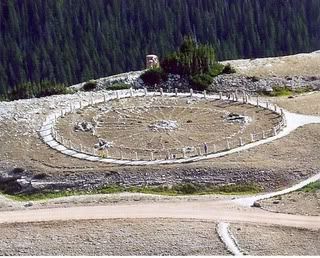
The Bighorn Medicine Wheel is a sacred site to many tribes, including the Cheyenne, the Crow, and the Shoshone. According to Crow oral tradition, the early 19th century leader Red Crow did his vision quest at the Medicine Wheel. He was visited by the little people who took him into the earth and gave him his medicine. Later in life, as he lay dying, he told his people that his soul would return to the Medicine Wheel after his death and that the people could talk to him there.
Like many ancient sacred Native American sites, the Medicine Wheel in Wyoming is on “public” land-land which is administered by the Forest Service. The culture of the Forest Service is often in disagreement with native cultures over the administration of public lands, particularly when it comes to sacred sites. Many modern Indian nations, including the Crow, Shoshone, Sioux, Cheyenne, and others, feel that this is a sacred site.
As early as 1915, the residents of Lovell, Wyoming were seeking National Landmark status for the Big Horn Medicine Wheel. They saw it as a means to attract tourists into the area and thus help develop the local economy. There was little concern for the spiritual or religious significance of the site.
In 1969 the Bighorn Medicine Wheel was declared a National Historic Monument to be administered by the Forest Service. Nearly two decades later-in 1988–the Forest Service decided to develop the Medicine Wheel for interpretation and to promote tourism. The plans included increased access and an observation tower adjacent to the Medicine Wheel. Although the local business community supported the idea, such facilities were considered extremely intrusive and offensive to Indian people. In spite of being informed about Indian feelings concerning development, the Forest Service proceeded with planning.
For many Native Americans, the Bighorn Medicine Wheel is not a monument to their spiritual past, but it is a living part of their contemporary spiritual traditions. Many do not view it as a tourist attraction and some feel that the tourists actually disrupt the harmony of this place.
When the Forest Service finally closed vehicle access to the Medicine Wheel site in 1993, non-Indians complained loudly that there had to be full access to the site for everyone at all times.
With a growing awareness of Native American concerns, in 1993 the Forest Service held three months of meetings regarding the management of the Bighorn Medicine Wheel. These meetings resulted in a memorandum of agreement which recognized Indian groups and committed the Forest Service to initiate consultation with these groups regarding development of the site. One observer noted:
“What the Forest Service spent six years resisting took 90 days to accomplish. It might have taken less than 90 days if the Forest Service had not spent six years building a legacy of mistrust.”
In 1996, the Forest Service created an 18,000 acre “area of consultation” around the Medicine Wheel. In this area, activities which detract from the spiritual values of the landmark may be banned. Two years later, the Wyoming Sawmills filed suit against the Forest Service over the area of consultation around the Bighorn Medicine Wheel. The suit argued that the Forest Service policy restricting logging in the area violated the separation of church and state. Finally, in 2001, a federal judge ruled that the Forest Service could continue developing a historic preservation plan for the Medicine Wheel National Historic Landmark. The judge rejected arguments that the Forest Service plan violated the First Amendment of the Constitution by favoring a religious site over other forest activities, such as logging.
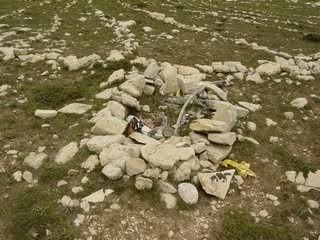

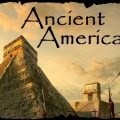
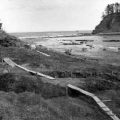
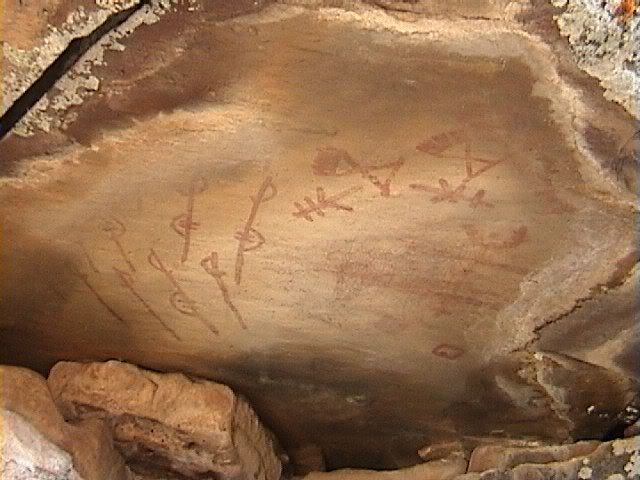
Leave a Reply